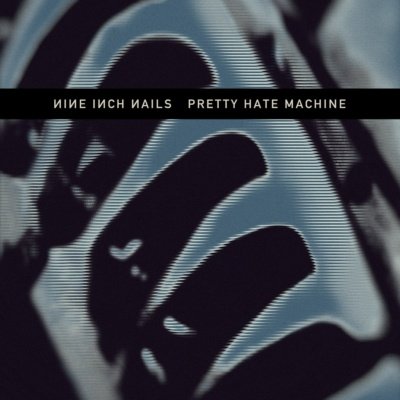
Listener’s discretion is advised.
Recently I was having coffee with an old friend. I was drinking my third cup for the day. He was surprised at my caffeine intake. I hadn’t even realized anything was off about my habit. I wondered where all that energy was going. I think I’ve figured it out.
In celebration of the recent Nine Inch Nails come back, I’ve been returning to their seminal debut, Pretty Hate Machine. It seems that its dark grooves have been syphoning out my negative energy like it’s popping some sort of cathartic pimple. This record is very near and dear to my heart. It is a classic in the genre of industrial music, but also a classic in my personal music canon. Its an album loaded to the brim with emotional energies, despite being composed, recorded and produced solely by Trent Reznor. It has moments of ecstasy, and moments of absolute despair. I am celebrating its 29th year of existence (It turns 30 in October of 2019) by going over some of my favorite bits from the album.
The album opener (and lead single) is “Head Like A Hole.” This track was the world’s first encounter with NIN. “Head Like A Hole” begins with an orchestra of insect-like drum hits. Trent deliberately sequenced every little click that appears in the track, and result is a track that’s as groovy and funky as it is creepy and crawly. This is a recurring theme on the record. Its music is wrong but so right, evil but so danceable, owed in part to all the wonderfully 80s drum hits, but also the arpeggiated synths that appear on later tracks like “Terrible Lie” and “That’s What I Get.”
Third track, “Down in It,” is a dark take on 80s hip-hop, like a goth reinterpretation of LL Cool J. It features samples that accent beats not unlike what a DJ would place into a beat for an MC, but these accents sound like the roar of a crowd in the gladiator arenas of hell. The lyrics and the title reference to at one point feeling as though you were better than something – some behavior, person, or idea – only to find yourself caught up in that very something. Like saying “I listen to everything but rap and country,” only to find your future self at a Florida Georgia Line concert, shilling out 40 dollars for a tour t-shirt. You were up above it, but now you’re down in it.
“Something I Can Never Have” just about marks the halfway point on the record. The track is a Trent Reznor love-ballad, with all that that descriptor entails. Trent has a few of these types of tracks in his discography, all of which stand out in different ways. His most famous is “Hurt,” a track off his third album, The Downward Spiral. The track really blew up after Johnny Cash covered it during his come-back sessions with producer Rick Rubin. Trent really isolates a specific human emotion with “Something I Can Never Have,” as the title suggests. At the center of the track are Trent’s vocals and a dissonant piano part that repeats unending throughout the track as synthesizers swell around it. The track captures the longing for that which you depend on – love, drugs – that empty feeling; an unfillable void. The track is one of Reznors magnum opera, capturing a feeling that he continues to portray years later in NIN as well as his soundtracks for several recent David Fincher films (Gone Girl, The Social Network).
The second half of the album returns to the pace set by the first four tracks. “Kinda I Want To” brings the drums once again. It chops up classic breakbeats sampled from jazz records and intersplices them with synthesizers that evoke a capsizing Starship Enterprise. Combined with Reznor’s aggressive vocal delivery, a bouncy and distorted anthem of desire is birthed from the fire and brimstone. “That’s What I Get” is another highlight of the album. It beautifully contrasts hectic drum sequences and synthesizers of the other tracks with sparse instrumentation and Trent’s vocals on the verses. The standout moment on the track for me is the bridge where Reznor laments: “Why’s it come as a surprise – to think that I was so naïve // maybe didn’t mean that much, but it meant everything to me.” This bridge, where the isolated vocals and synthesizer really shine through, keeps me coming back to this track.
Just as the track swells to a climax, the album takes you in a different direction with the penultimate track, “The Only Time.” This track is a lyrical highlight if you enjoy pure and unrefined edginess. I won’t quote any of the lyrics as they are a bit raunchy, but the track has a sinister sort of lust to it that does not fail to entertain. The breakdown around the 3-minute mark of this track is another highlight of the album, with an ascending baseline and punchier than punchy drums as Reznor barks “This is the only time I really feel alive” repeatedly.
The album is bookended by “Ringfinger” on the original release of the record (I mention this because on the remastered version there is a B-Side repurposed as a closing track that follows “Ringfinger”). “Ringfinger” is an industrial-house classic. Its driving 4/4 bass drum and syncopated synthesizers form a foundation for Trent to work his black magic over. It features distorted guitar stabs, sustained square wave synthesizers, and panning record scratches, and of course Trent’s vocals. The track, and the album, fizzles out into glitchy feedback, evoking the digital Dante’s Inferno that seems to characterize every track of this album as it cycles through the different circles of hell on each track, from limbo to treachery.
So, as finals season approaches once again, next time you feel like you have too much negative energy, purge it with a listening of Pretty Hate Machine, available to stream or purchase on all your favorite platforms.
Written by Nick Amerkhanian

